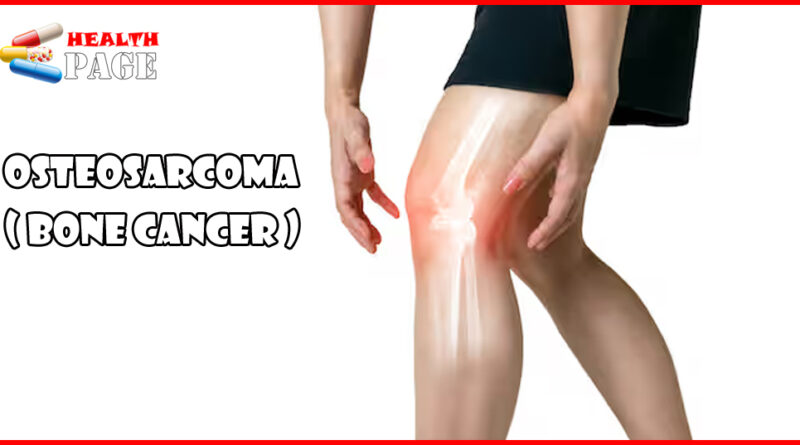Osteosarcoma (bone cancer): Cancer of the young
Osteosarcoma is the most common type of bone cancer and usually affects adolescents or young adults between the ages of 10 and 30. Osteosarcoma accounts for 2% of all cancer cases in children and adolescents.
Other cancers that occur in the bones include Ewing’s sarcoma, Langerhans cell disease, and lymphoma.
What symptoms may occur?
Pain is almost always the first symptom of osteosarcoma, but it is often ignored in the earliest stages.
For some reason, it often occurs during the growth period, when children are approaching or entering puberty, and the discomfort caused by the disease is often mistakenly attributed to growth.
Many times, patients will be injured unexpectedly, feel pain and go to the hospital for treatment. After a period of time, swelling will appear. In some children, the bones affected by osteosarcoma may be fractured. At this time, the child cannot bear the pain, so the parents will send the child to the hospital for treatment.

Which groups of people are at risk of the disease?
The cause of osteosarcoma is unknown. Boys are more likely to get osteosarcoma than girls. Children with osteosarcoma tend to be taller than their peers. A small percentage of people have abnormal gene mutations that put them at risk for it.
Children with abnormal RB genes are at high risk for a type of eye cancer called retinoblastoma. They are also at risk for osteosarcoma.
Other patients with Li-Fraumeni syndrome are at risk for sarcomas, leukemias, and adrenal cancer. Their p53 gene is not functioning. Children who have been treated with radiation therapy are also more likely to develop osteosarcoma.
How is osteosarcoma diagnosed?
The thighbone (femur) and leg bones (tibia and fibula) are the bones most commonly affected by osteosarcoma.
A simple X-ray can provide doctors with important clues in diagnosing bone cancer.
CT or MRI can show the specific features of osteosarcoma.
The diagnosis of osteosarcoma is confirmed by removing some tissue from the tumor using a fine needle (biopsy) for pathology examination.
It can be staged with a chest X-ray and bone scan, or just a PET scan, to check for any spread beyond the original site.
How to treat it?
It can be treat with chemotherapy and surgery. The current standard treatment is to first undergo chemotherapy for two to three months, and then completely remove the tumor through surgery when the tumor becomes smaller. After the surgery, chemotherapy is required for another five months.
The chemotherapy regimen that produces the best therapeutic effect is methotrexate, doxorubicin, and cisplatin (MAP regimen).
The type of surgery recommended will depend on the extent of the tumor after chemotherapy, with the primary goal being limb salvage rather than amputation.
What are the chances of survival for patients with osteosarcoma?
The chance of surviving osteosarcoma depends on how advanced the cancer is when it is diagnosed.
Currently, the long-term survival rate for children with localized osteosarcoma (where the cancer has not spread) is between 70 and 75 percent.
For children with osteosarcoma that has spread to the lungs, their chance of long-term survival is about 40%.
If osteosarcoma has spread beyond the lungs to other parts of the body, only 10 percent of people will survive.
What are the complications of osteosarcoma? How is it treated?
Children with osteosarcoma may lose a limb to the cancer. Even after limb-sparing surgery, children often need some kind of transplant to replace the missing bone and sometimes even a prosthesis to keep the joint functioning properly.
Chemotherapy can also cause short-term and long-term side effects. Immediate side effects include nausea, vomiting, mouth sores, sore throat, constipation, and diarrhea. These side effects may go away after treatment ends.
Infection is a major problem during treatment, but careful monitoring and treatment with growth factors or antibiotics often help. Hair loss is probably the last side effect you experience, but your hair will grow back after chemotherapy is over.
Methotrexate toxicity can sometimes affect the brain and kidneys. However, the chances of these things happening are very small.
Doxorubicin may cause long-term side effects on the heart. Cisplatin may damage the hearing and kidneys, and although severe hearing loss, heart failure, and kidney failure are uncommon, the function of these organs must be closely monitored during and after treatment.



Pingback: Practice | 99% of fascia gun is used incorrectly
Pingback: Why doesn't have the heart cancer? Because it wins from birth!